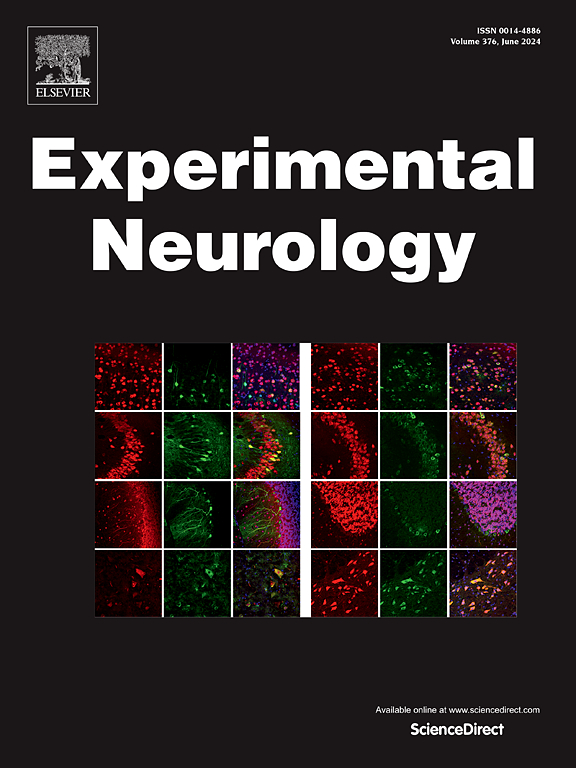独特的红外热成像剖面和改变下丘脑神经化学与内毒素休克死亡率相关。
IF 4.6
2区 医学
Q1 NEUROSCIENCES
引用次数: 0
摘要
新生儿败血症导致显著的发病率和死亡率,但早期发现是临床挑战。在内毒素休克的新生大鼠模型中,我们发现了独特的红外热成像(IRT)皮肤温度谱,可以识别后期死亡的风险。将10日龄大鼠置于热稳定隔离体中,连续8 h腹腔注射LPS(或生理盐水),获得颅骨(TCR)、肩胛骨(TSC)和臀部(TRU)皮肤温度的IRT图像。LPS在注射后4.5 ~ 7.5 小时内导致~ 74% %的死亡率(称为非幸存者,LPSNS)。LPSNS和LPSS大鼠在注射后约80 ~ 100 min (t80 ~ 100), TCR、TSC和TRU呈下降趋势。与LPSS大鼠相比,LPSNS大鼠体温过低时间稍早(T80),严重程度更大,且无法恢复。注射后4 h (T240), LPSS大鼠TCR、TSC、TRU完全恢复。在单独的大鼠中,假定鉴定的LPSNS大鼠在注射后T240时下丘脑小胶质细胞和ECM表达增加,并与IR温度负相关。IRT可能是一种有用的内源性休克死亡风险的早期识别方法,这可能与下丘脑炎症(小胶质细胞)和ECM神经化学的独特变化介导的中枢神经系统产热机制的早期失效有关。本文章由计算机程序翻译,如有差异,请以英文原文为准。
Unique infrared thermographic profiles and altered hypothalamic neurochemistry associated with mortality in endotoxic shock
Neonatal sepsis results in significant morbidity and mortality, but early detection is clinically challenging. In a neonatal rat model of endotoxic shock, we characterised unique infrared thermographic (IRT) profiles in skin temperature that could identify risk of later mortality. Ten-day old rats were placed in a thermally stable isolette and IRT images of cranial (TCR), scapula (TSC) and rump (TRU) skin temperature were obtained continuously for 8 h following an intraperitoneal injection of lipopolysaccharide (LPS) or saline. LPS resulted in ∼74 % mortality (designated as non-survivors, LPSNS) between 4.5 and 7.5 h post-injection. LPSNS and survivors of LPS (LPSS) rats displayed hypothermic tendencies with TCR, TSC and TRU decreasing at ∼80–100 min (T80–100) post-injection. Compared to LPSS rats, however, the hypothermia of LPSNS rats occurred slightly earlier (T80), was more severe, and failed to recover. The TCR, TSC and TRU of LPSS rats fully recovered by 4 h (T240) post-injection. In separate rats, hypothalamic microglia and extracellular matrix (ECM) expression at T240 post-injection were increased in putatively identified LPSNS rats (but not LPSS rats) and negatively correlated with IR temperatures. IRT could be a useful early identifier of infants at risk of death from endotoxic shock, which may be related to early failure of central nervous system (CNS) thermogenic mechanisms mediated by unique hypothalamic changes in inflammatory (microglia) and ECM neurochemistry.
求助全文
通过发布文献求助,成功后即可免费获取论文全文。
去求助
来源期刊

Experimental Neurology
医学-神经科学
CiteScore
10.10
自引率
3.80%
发文量
258
审稿时长
42 days
期刊介绍:
Experimental Neurology, a Journal of Neuroscience Research, publishes original research in neuroscience with a particular emphasis on novel findings in neural development, regeneration, plasticity and transplantation. The journal has focused on research concerning basic mechanisms underlying neurological disorders.
 求助内容:
求助内容: 应助结果提醒方式:
应助结果提醒方式:


